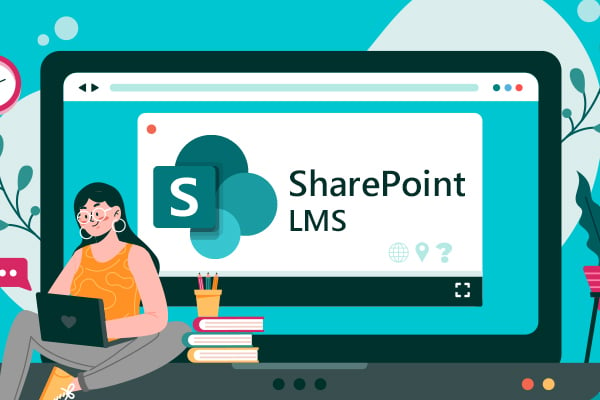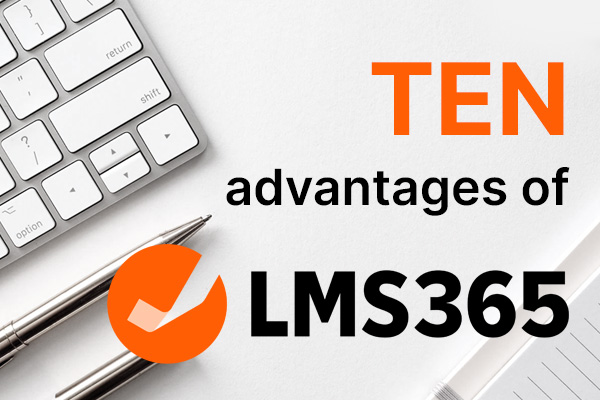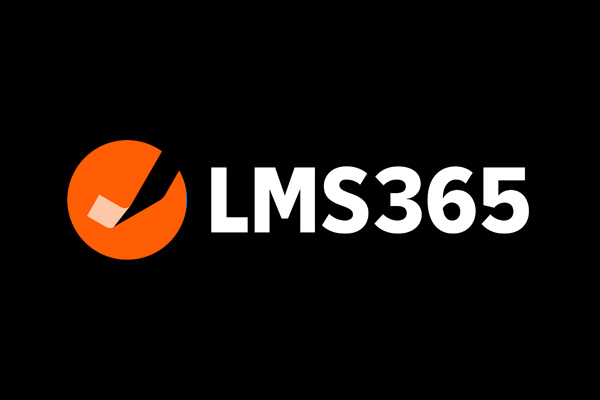Introduction
Within every organisation, learning and training is a key activity. It’s a factor in both enabling employees to perform their role to the best of their ability, but also in engagement, with learning opportunities regarded as an element in the overall employee experience.
Learning takes many forms including gaining experience on the job and more “social learning”, but also offering formal opportunities to take classroom and online-based courses. Within most organisations, employees take a variety of courses in order to learn new skills, gain professional qualifications, meet compliance needs and support personal and professional growth.
Acquiring a Learning Management System (LMS) is essential in supporting more formal learning opportunities through the organisation. An LMS allows employees to view and take courses, access a record of their learning and does much of the heavy lifting on the administration of learning throughout the enterprise. However, despite its importance, the LMS can sometimes be peripheral to the digital workplace, and have a poor user experience. Moreover, not every organisation has chosen to invest in an LMS.
However, increasingly there are opportunities to integrate the LMS much deeper into the everyday digital workplace and flow of work, particularly if the LMS is based on Microsoft technologies such as SharePoint. In this article we’re going to do a deep dive into Learning Management Systems, especially those based on Microsoft.
We cover what an LMS actually is, its essential features, and the benefits of using an LMS. We then explore the kind of LMS solutions that are available and the advantages of using an LMS based on Microsoft technologies. We also cover Microsoft Learning Pathways and Microsoft Viva Learning and how these relate to your LMS.
What is a Learning Management System?
A Learning Management System is a platform that helps to manage, administer and deliver learning through capabilities such as learning registration, course discovery, e-learning, course creation, automation and more. It also provides analytics and reporting, and often is the system of record for a person’s learning and training within an organisation. An LMS is sometimes called a Learning Platform.
Who uses a Learning Management System?
Most medium and large enterprises choose to invest in an LMS regardless of their sector. Many smaller organisations may also choose to use an LMS, particularly if learning is a key part of their employee experience or they have mandatory training that employees need to take. The good news is that many LMSs are flexible and can support the needs of very different types of organisations, regardless of size and industry sector.

What are the essential features of an LMS?
There are a number of common features of an LMS that help to deliver a strong learning experience and also support learning teams in administering training.
Course catalogue
At its core, an LMS offers opportunities to provide a course catalogue for employees to access where they can search or browse to view different training opportunities available through the organisation. This can include e-learning, classroom-based learning and even formats like webinars, and also cover learning created internally or externally.
Course registration
As well as viewing training, an LMS should also handle the registration process for training, allowing employees to book their place, and for administrators to view who has registered, manage the numbers and even provide additional features like waiting lists.
E-learning
An LMS will generally also provide an environment for users to carry out e-learning within the platform, usually via the desktop or through a dedicated mobile app.
Learning records and required learning
An LMS will have the ability for users to view their learning record, covering the training they have already taken. The LMS may be the system of record for learning. The LMS should also include details of any learning they need to take, for example covering courses that are mandatory.
Personalisation and targeting
An LMS needs personalisation and targeting to enable the ability for users to view relevant courses to their role, level or tenure.
Course creation
A comprehensive LMS will also have the ability to create courses within it, for example providing access to different materials, building quizzes and more. Ideally these should allow employees outside the learning team to create their own courses, effectively democratising learning and encouraging knowledge sharing.
Importing SCORM content
Many organisations choose to use third-party content in their LMS. An LMS should have the ability to import course material that is in the SCORM format, a technical standard for e-learning courses. Some LMS providers even have agreements with popular course providers to enable even easier access to third-party material, usually at lower cost than acquiring a separate subscription.
Automation and notifications
An LMS brings automation to learning administration, saving huge amounts of time and effort for learning teams and course administrators. For example, an LMS should automate tasks such as enrolling new hires on to mandatory courses, sending out notifications and reminders related to learning, tracking completion rates, requesting feedback on a course and more. Some of the automation relates to notifications sent to learners, another key feature.
Certification
Certification is another feature of an LMS, for example allowing for the issuing of certificates for mandatory learning passed, as well as managing an annual certification process.
Analytics and reporting
Analytics and reporting are critical features of a good LMS, ensuring there is reporting relating to course take-up and completion, tracking mandatory learning, gathering learning feedback from users and even performing an analysis of skills.
Learning paths
Learning or training paths allow users to take a series of connected courses that support a particular training path, for example related to a particular role, topic or career.
Mobile app
Mobile access to learning is important, especially for frontline staff who may not have access to a desktop during the working day, or for employees wanting to carry out training in downtime where mobile access is often more convenient. A good LMS should have a dedicated mobile app so it can be accessed on both corporate and personal devices.
Additional features
Different LMSs may also have additional features such as support for multi-language, gamification points, additional reporting features, the ability to integrate with different systems and more. Many LMS products are mature and feature-rich, having accumulated functionality over the years.

What are the benefits of using an LMS?
There are numerous benefits of using an LMS that have a positive impact at an individual, team and organisational level.
Easier administration
A LMS will significantly reduce the time and effort involved in administering a learning programme. For example, teams that have to use email and spreadsheets to manage course registrations and update learning records waste huge amounts of time and are prone to making incomplete or incorrect records. It’s also extremely dull and repetitive work. An LMS can automate the registration process, build learning records, report on course completions and more, freeing up learning administrators to spend their time on more valuable and interesting activities.
Supporting employee onboarding
An LMS can support employee onboarding by presenting new starters with a list of courses they need to complete based on their role. The LMS will automate registration, send reminders and more, and often proves to be an essential component of any onboarding programme that needs to scale. Again, it saves huge amounts of time and effort for the learning or HR team.
Mandatory training and compliance
Most organisations have mandatory training that needs to be carried out, sometimes on a reoccurring annual basis. This may have to be done for compliance reasons. An LMS does all the heavy lifting on mandatory training, including monitoring completion rates and reporting on these, including reporting required by third parties.
Standardising learning opportunities
In large and complex global companies, often the learning opportunities for staff can differ from location to location. An LMS can help standardise access to learning right across the enterprise, helping provide a level playing field for all employees regards to training and development.
A more skilled workforce
Ramping up training via an LMS supports a more skilled workforce that can lead to better performance in roles. Because an LMS can also help you to identify which training is being completed and spot potential gaps, it also means you can start to provide training where in-house skills are less prevalent, for example in various digital skills.
Faster roll-out of training
An LMS can help you to roll-out training quickly to meet urgent needs right across the enterprise, for example in how to use ChatGPT or for the sales team to get acquainted with a new product.
More targeted training
Personalisation is an important feature of an LMS as it allows teams to deploy targeted training to different groups based on role, division, language and so on. The ability to provide more targeted training means it is more relevant, increases adoption and ensures it has value.
Greater uptake
Because an LMS allows learning teams to scale up learning in their organisation by reducing the administration overhead and also presenting a wider set of courses, it can lead to a greater uptake in learning. Adoption also increases because it is easier for employees and their managers to view the learning opportunities available. An LMS will also tend to allow more e-learning to take place which is usually easier for employees to complete, so again this increases adoption of courses.
Reduced learning costs
A well-implemented LMS can result in overall reduced learning and training costs. This is usually achieved through time saving on administration costs through automation, reporting and other management features. Overall cost savings can also be as a result of using the LMS to introduce more e-learning to replace inefficient and costly classroom-based training.
Knowledge management (KM)
By providing an easy platform for employees to access learning but also for internal teams to create specific courses, some LMSs can end up becoming very effective platforms for knowledge sharing. For example, a product team might create a new product and then create learning to introduce it to the rest of their organisation, or a sales team might create learning around best practices. An LMS allows this process to be far more straightforward, supporting knowledge sharing and KM practices.
Employee engagement
Opportunities for learning are attractive for employees, and can be a factor in engagement, as well as retaining and attracting talent. Learning is also generally regarded as part of the overall employee experience. An LMS can help formalise learning and training opportunities, which in turn supports efforts to improve employee engagement and provide a great employee experience.
A culture of learning, development and growth
Over time introducing an LMS can support an overall culture of learning, development and growth. This has huge benefits across any business, leading to a commitment to continuous improvement, sharing knowledge and investing in people, with multiple benefits flowing including improved customer experience, innovation, high performance and more.
What different Learning Management Systems are on the market?
The LMS market is very mature, with a huge amount of choice to suit a different range of needs and budgets. Products include:
- Highly established dedicated enterprise learning management systems such as Cornerstone.
- An LMS that also come with bundled with opportunities to subscribe to e-learning courses, for example Skillsoft.
- Learning modules that are part of a wider HR system such as SAP, PeopleSoft or Workday.
- Smaller and more flexible learning management systems that are often designed for smaller and medium-sized companies.
- Learning platforms that are based on SharePoint and Microsoft 365 technologies such as LMS365.
- Different learning apps like Microsoft Viva Learning that aren’t actually learning management systems but complement deeper learning platforms.

What are the advantages of using an LMS based on Microsoft 365 technologies?
The LMS market includes solutions based on Microsoft 365 technologies. For example, LMS365 is a solution that is built on SharePoint and ensures all data sits within your Microsoft 365 tenant. Using a Microsoft-based learning management system has a number of advantages.
Seamless integration with a Microsoft 365 digital workplace
An LMS that is based on SharePoint such as LMS365 has the advantage of seamless integration with any Microsoft 365-powered digital workplace, making it much easier for employees to access courses, for example through a SharePoint intranet or Microsoft Teams, It can also integrate with Microsoft-powered search, Power BI dashboards and more. This means that learning can be in the flow of everyday work where employees spend all their time, helping to drive up the usage and take-up of courses.
Using a Microsoft 365-based LMS also means you can create a more consistent user experience across your digital workplace. For example, some teams that implement LMS365 create a SharePoint page on their intranet as the entry point into the LMS, with users not even knowing that they have entered a different application.
Configure and customise the system to your needs
SharePoint and Microsoft 365 are incredibly flexible, so a Microsoft-based LMS allows you to configure and customise the learning experience to the needs of your employees. For example, you may want to add additional custom workflows using Power Automate or add additional webparts to provide additional access to SharePoint content or Viva Engage / Yammer discussions.
Include Microsoft-based files
Most course material for e-learning is in SCORM format, but using a SharePoint-based product like LMS365 allows you easily provide access to existing Office files such as in Word or PowerPoint formats through the LMS, effectively lowering the barrier to course creation for non-learning professionals.
Easier governance and compliance
Because a SharePoint or Microsoft 365-based LMS can sit within your Microsoft 365 tenant it means it is much easier to comply with your existing governance, security and compliance requirements that are already in place for your Microsoft 365 digital workplace. For example, access for starters and leavers to your LMS will align with your existing Microsoft 365 set-up.
Use Active Directory profiles and groups
A huge advantage of a Microsoft-based LMS like LMS365 is that it can leverage Active Directory profiles and groups for learning enrolment, targeting for learning opportunities, and providing seamless and frictionless access to courses.
Better placed for future changes
Microsoft continues to invest in Microsoft 365., Microsoft Teams and the Microsoft Viva suite of employee engagement tools, including Microsoft Viva Learning. Having a SharePoint-based solution ensures you are future-proofed to continue to integrate with other tools across the digital workplace and take advantage of other features such as the Power Platform to enhance the learning experience.
A happier IT function
Many IT functions are committed to a Microsoft 365 digital workplace and Azure hosting, with the relevant tools, governance, processes and knowhow in place. Most IT functions are very comfortable with the idea of an LMS that is based on SharePoint or Microsoft 365, as it will be much easier to implement, manage and support. Our experience is that they also are more likely to sign-off on any business case for it. A solution like LMS365 leads to not only a happier learning team but also a happier IT department.
Can I use an LMS with Microsoft Learning Pathways?
Microsoft Learning Pathways is a valuable collection of course material provided by Microsoft that can help users get the best out of Microsoft technologies and support adoption. This ready-to-go material can usually be made available via an LMS – this is especially easy with an LMS based on Microsoft technologies.
Can I use Microsoft Viva Learning as my LMS?
Microsoft Viva Learning is a module within the Microsoft Viva employee experience suite, that is designed to open up easier access to learning materials from Microsoft Teams. While the number of features within Viva Learning are increasing, it is worth nothing that the application is not designed to be an LMS in its own right, and is not really an alternative for it.
In fact, Viva Learning works better when it is implemented alongside an LMS, providing easier access to the course catalogue and related e-learning opportunities. Microsoft has also worked with leading LMS providers including Skillsoft, SAP Success Factors, Cornerstone and LMS365 to deliver out-of-the-box integrations Viva Learning and these learning management systems.
What is LMS365?
LMS365 is a leading learning management system that is built right into Microsoft 365, SharePoint and Teams. It is a mature, feature-rich platform that has everything learning teams and employees need to manage and access learning across the enterprise. It is also very reasonably priced. Content Formula has partnered with LMS365 to offer this robust and popular solution.
Because the platform is based on of Microsoft 365, it can also integrate seamlessly with the rest of your digital workplace, which provides a range of additional benefits, some of which have already been explored above.
How can Content Formula help me?
Our experienced Content Formula consultants can help you in a number of different ways.
Implement LMS365
LMS365 is a leading learning platform built on SharePoint that integrates seamlessly with your Microsoft 365 digital workplace. Content Formula has partnered with LMS365 to provide a full implementation of this mature, feature-rich LMS.
Integrate learning into your digital workplace
Access to learning should be a key ingredient of every digital workplace, but that is not always the case. We can help integrate learning into your Microsoft 365-powered digital workplace so it is in the flow of work, starting by defining a strategy and roadmap, and then supporting your implementation.
Microsoft Viva Learning
Microsoft Viva Learning is an exciting module within the Microsoft Viva employee experience platform that can open up access to learning through your digital workplace through Microsoft Teams. We can help you to implement and launch Viva Learning, making it work with your existing LMS including with LMS365.
Build custom learning solutions and integrations
Some organisations have particular learning needs, for example integrating a particular LMS with their SharePoint intranet, or requiring custom workflows or dashboards. We can help build custom solutions and integrations across your Microsoft 365 digital workplace or SharePoint intranet that can elevate learning for employees.
Knowledge management strategy
A platform like LMS365 can also prove to be a highly effective knowledge sharing platform. We can work with you to define a knowledge management strategy that can use LMS365 in conjunction with other Microsoft 365 tools such as Viva Engage and SharePoint.

Find out more about LMS365...
Request a call back with one of our experts, for a free consultation about how LMS365 can benefit your business.





